In Defense of #151Spokeshaves…and Wooden Spokeshaves and Veritas Spokeshaves too
For more information on spokeshaves, see our beginner site Common Woodworking.
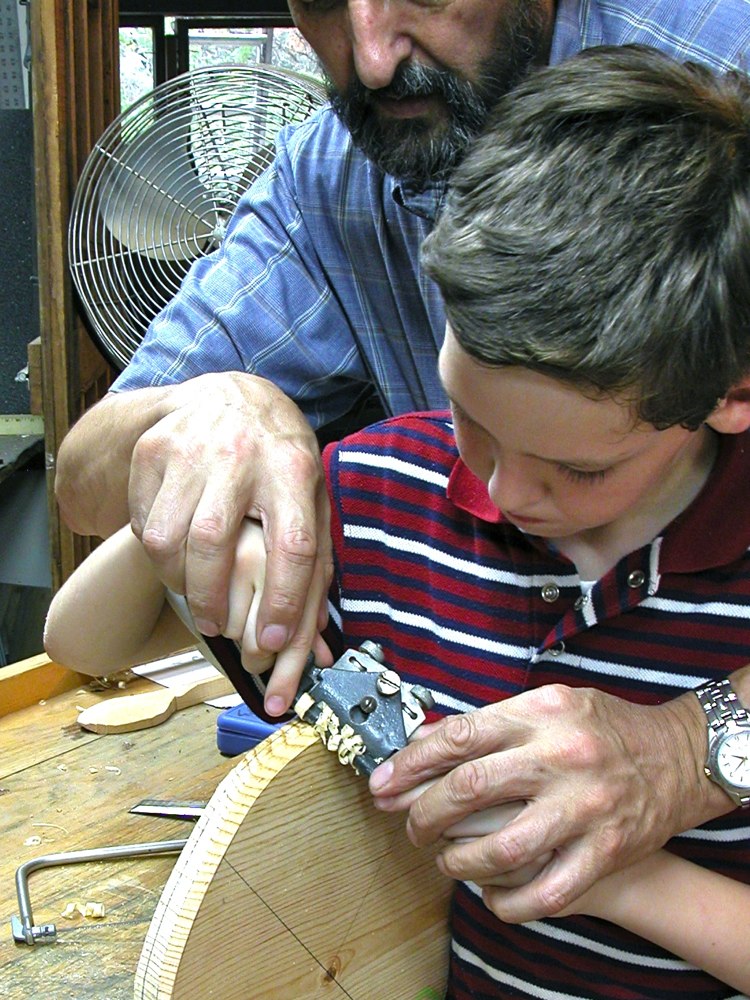
Whereas I do know a well-made and well-set and sharpened wooden spokeshave performs exceptionally well, there are many aspects of woodworking that a #151 will do better. The reason for this is the simple fact that the blade of the 151 doesn’t form the sole of the spokeshave but passes through the sole in like manner to say a plane. In a wooden bodied spokeshave the thickness of the shaving is determined then by setting blade deeper than the wooden body so as to form a step-like presentation to the wood. In the very narrow field of chair bodging, generally making parts from green wood and even dry wood, this spokeshave is more ideal than the others. That doesn’t mean that the others will and do work well also, just that it works better. In essence this sets it apart from the 151 and others in that the 151 cutting action is very different. In the bedded angle of the #151 the iron is presented at a steep angle and protrudes through the sole so that the sole is continuous and level on both ‘fore and aft’ aspects of the cutting edge.
Of course the other dominant feature distinguishing these two spokeshave types is the bevel up aspect of the wooden bodied spokeshave (above)…
…and the bevel-down of the metal-bodied type of the #151.
Here are the three basic spokeshaves I am referring to in this blog.
As I say, for chairmaking, where a bodger might decry the #151 as inferior to the old wooden ones, the wooden spokeshave works best and is therefore declared superior. On the other hand, others might declare the Veritas superior to any other because of its tighter mouth opening and superior engineering and metal alloys and such.
Here is the Lee Valley’s Veritas model – a near perfect tool for some work
Indeed, I love these spokeshaves because of the above features, which are well thought through aspects of the design. You see each perceives and expounds from their small and even very narrow sphere of working wood and therefore declare the merits bests suited to their sphere. Fact is that these statements can be true only on a very limited level. Further fact is that they are all good, all indispensable, all highly developed and all provide uniquely different services in the field.
Here is the Stanley #151 spokeshave I use most commonly of all
Then for some reason the #151 in the minds of the uninitiated becomes some kind of clunker because of adverse press by writers, bloggers and magazines. Some time back I blogged that the UKs The Woodworker magazine writer wrote something very close to “it won’t make a shaving” and pits himself against a hundred thousand woodworkers that have owned and used a #151 for half a century and people stop buying what is a truly remarkable tool.
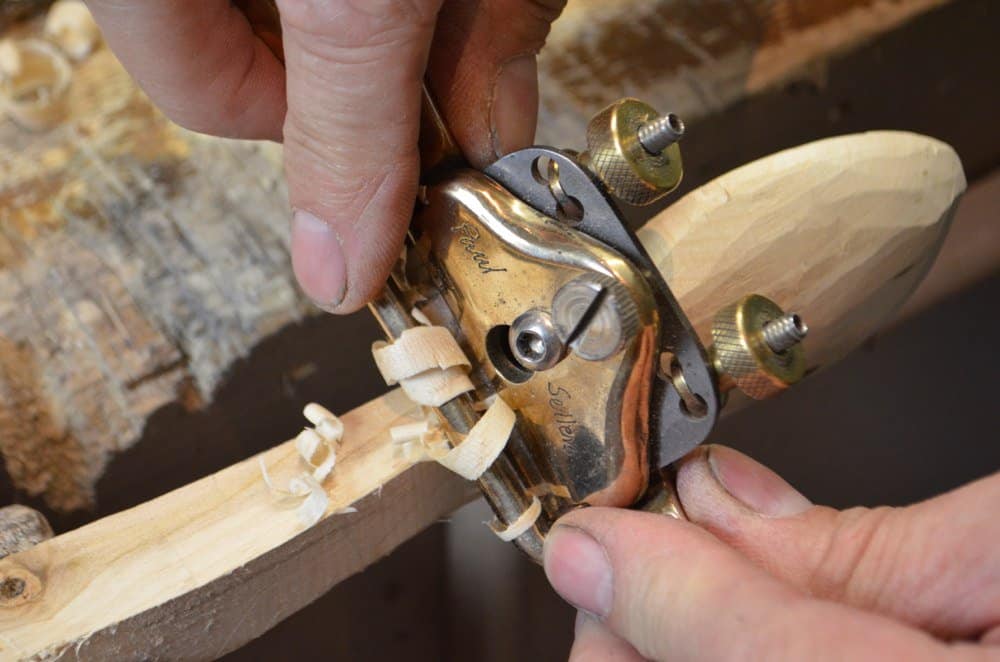
The #151 spokeshave emerged from the casting foundries of western makers to provide a lifetime tool that worked less well for chair bodging than it did woodworking joinery and furniture making. On the one hand the wooden spokeshave was indeed used mostly for making spikes, spindles and spokes of every different shape and size. Ladder rungs and chair slats, wagon spokes and spinning wheel components came from the long, with-the-grain cuts that peeled and pared the wood along the grain. With its different presentation, the #151 performed much different work in cutting coves and convexes with equal alacrity. Did that mean the wooden spokeshaves couldn’t do this? Not at all. Just that here there was a new alternative that worked and worked well.
Veritas came out with their version of the spokeshave with wooden handles for comfort and shock absorption, tighter mouths and finer adjusters. Superior in quality, the tool works well and especially so in those areas where really fine work is required. Will it take a heavy cut like the #151? No, not so readily and not without changes to the mouth, but that wouldn’t be practical because that would change its performance for finer work benefitting from a tighter mouth opening.
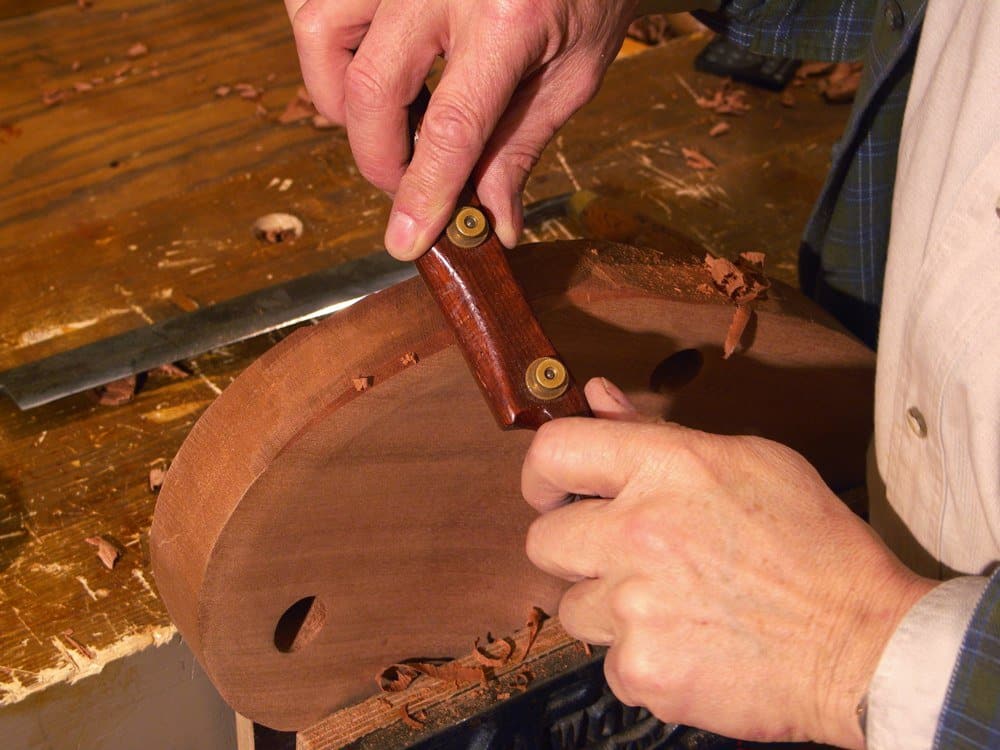
My conclusion is this. With spokeshaves there is no one size fits all although you could choose one of these and be happy making adjustments to make them suit the task each time you reach for it. Each of the types discussed will perform differently for different tasks. Bodging chair makers work primarily with long grain cuts and minimal crossgrain work and so like the wooden spokeshaves best because that’s what they do best. The #151 type spokeshave with its open mouth is a work horse of a tool and will tackle almost any and all work well and can be refined for fine work too. I like owning the Veritas spokeshaves for fine-tolerance work but have no hesitation pulling them out for almost anything I do.


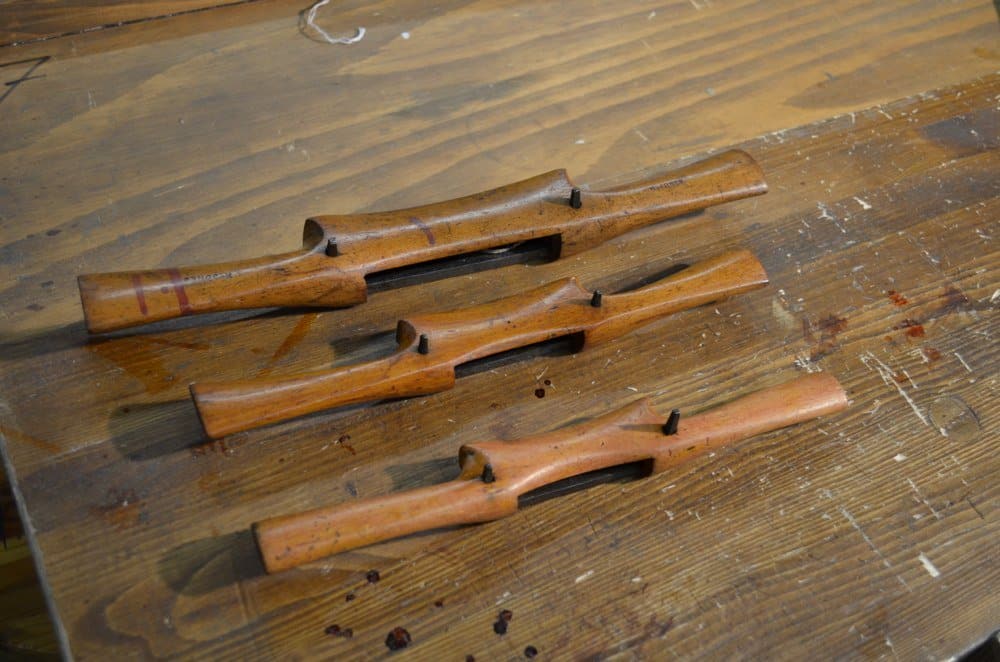
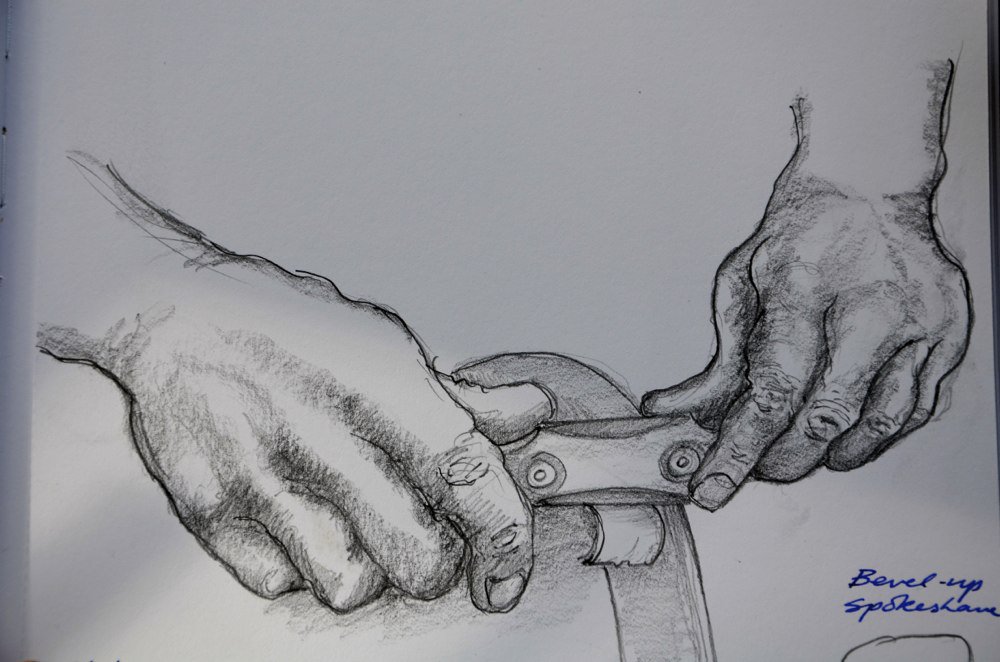
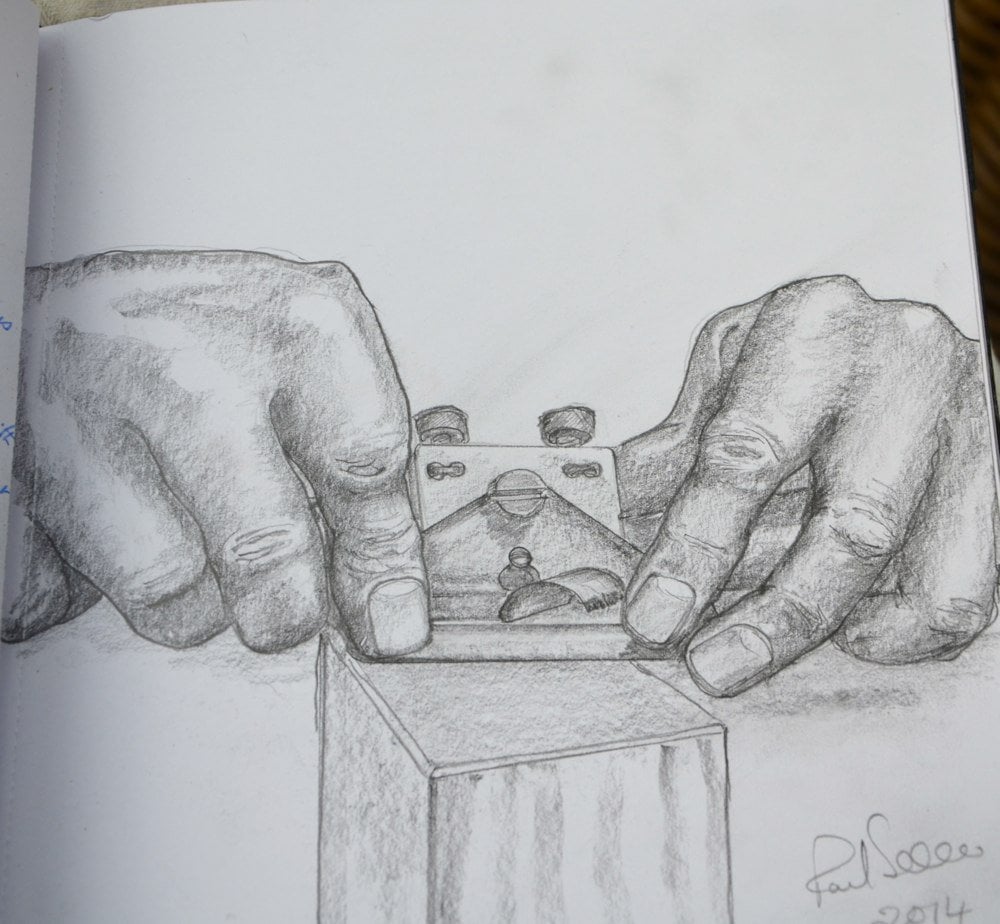
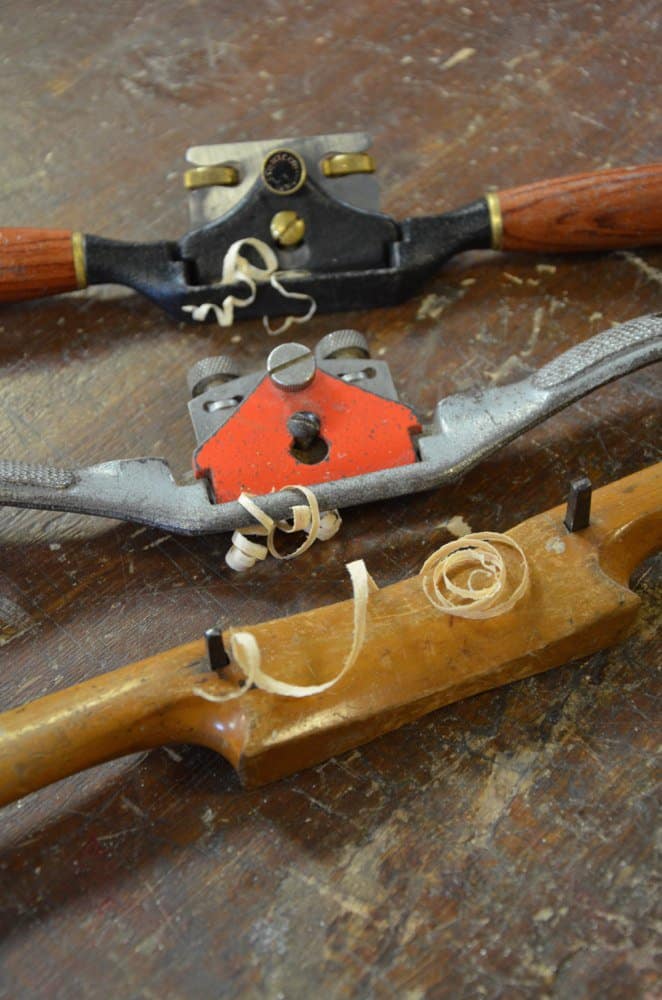
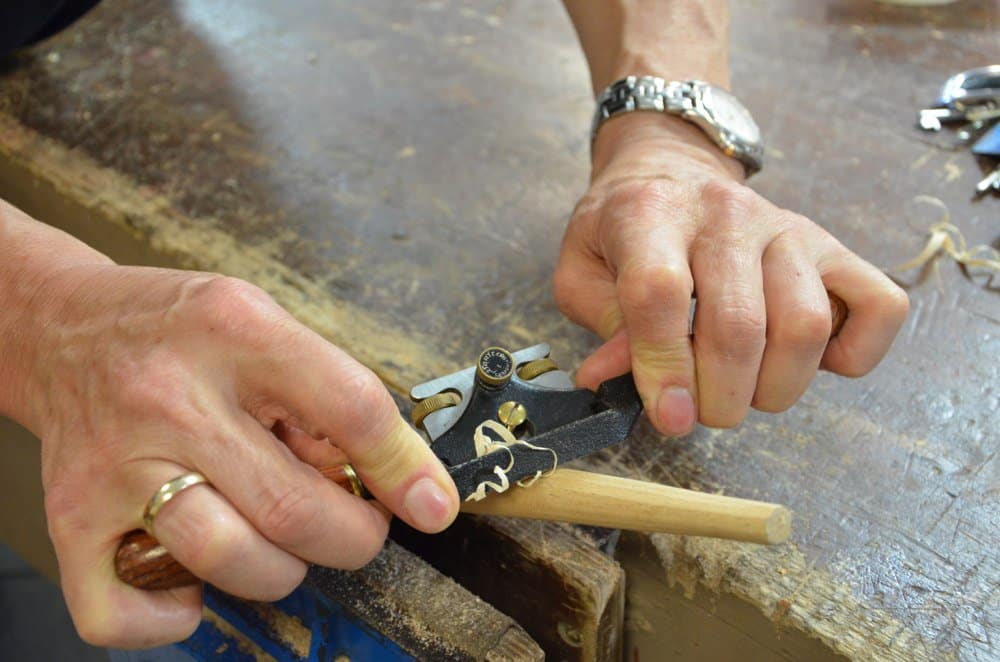

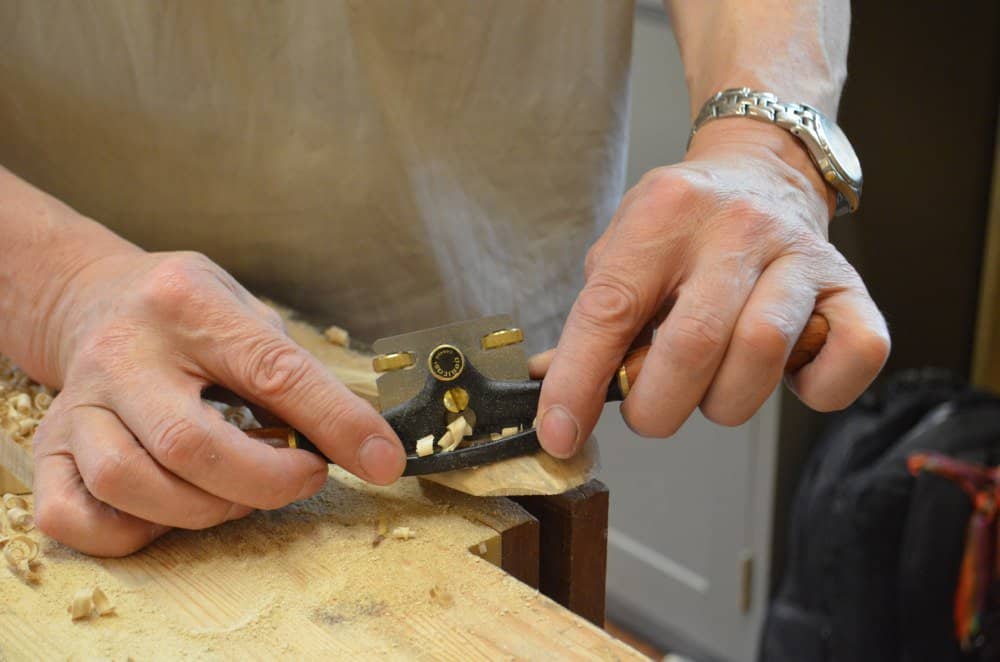
Hurrah, Mr Sellers! I appreciate, almost beyond telling, your indictment of the “one size fits all” philosophy, and not just apropos of the underappreciated spokeshave. “One size fits ill” (sic) is now applied to almost every product, and the outcome is predictable.
Maybe the best tool in the one we use everyday. We know where it performs well and where we need to adjust the movement and taje more care.
After a while there is some kind of empathy with the tool: it is no more between the hand and the wood, it is part of us.
At this time, there is no more a better tool…
Very well said Paul. I own several different spokeshaves for that exact reasons you mention. I love the quick work of the older 151’s, the versatility of the Stanley #60, and I really like the new Pinnacle #151 shaves (for those that love new shiny tools). I use the Veritas less, but when you need a nice tight finish cut, its the tool I grab. Just like hand planes, each one excels at certain tasks.
Thanks for this. I have always been extremely happy with my wooden spokeshaves, but am planning now to take my dad’s iron spokeshave out of his toolbox, tune it up and try it.
I received an email from Popular Woodworking magazine here in the US, selling a DVD with the entire “Woodwork”magazine run. As an enticement they offered a freebie- and electronic copy of the issue from Feb, 2005. containing an article about building the craftsman style rocker by….Paul Sellers. Excellent article, and if you were a contributor to the magazine, I’d like to have the collection.
Of all the magazines I’ve written that was the best. John Levine was my favourite editor to work with too. I for one am sorry it went down in the end.
I have one more blog to conclude the 151 treaties ready to go up today.
Very good article Paul, well said.
I have 5 or 6 spokeshaves, some wooden some metal, but one that i use the most is Stanley 53. I really like it because if you need thicker shaving you can open the mouth of the tool with a turn of the screw. When you need a finer shaving you close the mouth, it is that simple with a turn of the screw.
I noticed that you very rarely mention the Stanley 53 spokeshave, why is that?
Is it that you have not used it so much like the 151?
There is also the Veritas low angle spokeshave ( http://www.leevalley.com/us/wood/page.aspx?p=44834&cat=1,50230&ap=1 ) which I think is their answer to the wooden spokeshave. The blade does not move, though; rather, a “toe” piece in front of the blade determines the shaving. Many like this so I decided to try one, but I’ve not had much luck with it. I found the small blade very hard to sharpen. I think you can tap the toe piece to set the shaving thickness but I still have trouble. I really think the issue here is me more than the tool and maybe me not finding the right application for it, but I’d say the 151 has been a better tool for learning. I can adjust the shaving more easily and that helps while learning to deal with washboard and other problems I struggle with as a new woodworker.
I used it for a a long time when I lived in the US and found it worked very well. However, I like wooden handles on this type of spokeshave so it would be less likely for me to change from the ones I have. It’s a good, lifetime spokeshave though.
For a new woodworker hobbyist that wants to learn the spokeshave, suggestion if you can only buy one? 151?
Yup! Best of all for everyday use.
Don’t need any more than that.
I am a complete beginner who found a vintage 151 for 20 online. Not knowing what a 151 was, I did a quick search and found out that it’s probably an old Stanley. Mind you, the seller said that it doesn’t say anywhere on it what brand it acutally is. Dunno if there’s been made 151 copies?. Anyway, without thinking I bought it, being a greenhorn, I just thought anything vintage/antique made by Stanley is good…
It’s on it’s way in the mail now, and I decided to do a little further research on it. And I almost lost it when the first things I found where the articles where these gurus are slagging it, saying it’s rubbish and so on… So thank you so very much for giving me peace of mind now! I am set on learning how it works and making the best of it. I feel it’s not right for a beginner to fork out loads of dosh on, say, Veritas or Lie Nielsen. It shouldn’t be so that the first thing you learn is to blame your tools!
I also work at a museum where we have professional traditional woodworkers. They’ve got every tool that’s ever been made, and to me they get more or less the same results with the cheaper or old tools as the new, expensive ones. They just say the expensive ones sometimes are a little more comfortable and quicker!
Thanks again.
I have more spokeshaves than I’ll ever need – old wooden bodied, new Boggs by Lie Nielsen, cigar shaves, on and on. The one I use most is the first one I ever got, the humble Stanley 51.
I remember it took a lot of lapping to flatten the blade, but it cuts wood beautifully.
Where does the pinnacle fit in? Is it more like a stanley or a veritas?
This doesn’t help me find what the question is. Can you be more specific?
Very true words and written very well, after all, you wouldn’t just own one plane or hammer. To me it just boils down to knowing how to use the best suited tool for the job in hand.
That was a great article. The #151 is great once I figured out that it was a bevel down tool. I get nice shavings and it’s easy to control. I wish I could get as nice a result from my #4 plane.